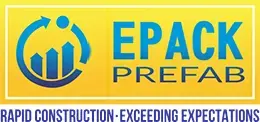The industrialised world has been quick to adopt the prefabrication method of building. However, digging far deeper into the research reveals that the idea of prefabrication has been around for more than a few decades.
Historical Trivia of Prefabrication
That in the 17th century, a fishing fleet in Massachusetts received a shipment of panelled wooden houses from Great Britain.
- A London carpenter constructed a portable house in the nineteenth century and shipped it to Australia.
Therefore, the concept of offsite construction with subsequent on-site assembly has long since faded into the background. Offsite construction has been used in a variety of European regions, and the region’s experts are happy to recommend their work.
Prefabricated modules and the predesign process are now widely used in the building industry. The manufacturing sector in India has recently gained widespread popularity. Public sector organisations and the government have also begun using this technology. Many factors contribute to its widespread popularity, but the speed with which it may be built and the reduced environmental impact of its construction make prefab particularly attractive.
The global prefabricated structure market is expected to grow at a CAGR of 5% over the next year or two, reaching a size of $135,945.6 million. The conventional construction market is evolving gradually, but this is to be expected given the lag time between innovation and widespread adoption. Prefabrication has been the method of choice for many commercial and industrial buildings, and container homes have become extremely popular in some regions.
Some of the most compelling arguments in favour of prefabrication are as follows:
-The ever-increasing population necessitates the development of rapidly constructed places.
-Rapid population urbanisation and industrialization
-Growth of Foreign Direct Investment in the Building and Infrastructure Industries Around the World
-Greater progress and recognition Increases in disposable income have prompted a surge in construction of new
-Needed for waste reduction in eco-friendly construction methods.
Some people worry that when you outsource your website’s development, you lose the ability to make last-minute adjustments. But with prefabrication, it’s different since dimensions, load capacity, and structural strength are tested beforehand. Construction begins when an accurate set of blueprints, complete with all necessary technical details, has been created.
The use of prefabricated modules in building is on the upswing:
Warehouses, factories, businesses, schools, and hospitals are where experts predict the greatest building improvement to occur in the near future. Prefabrication’s primary value proposition is the increased speed with which buildings can be erected. Modular prefabrication is flourishing as a construction method because of efforts to popularise it and make it more eco-friendly than the standard approach.
EPACK Prefab is one of India’s leading prefabrication businesses. In our twenty four years of production, we’ve had the honour of playing a significant role in the growth of the country’s infrastructure. To this day, we have prefabricated over 7 million square feet of space. Our products serve a wide range of markets, including manufacturing, retail, transportation, and government.











